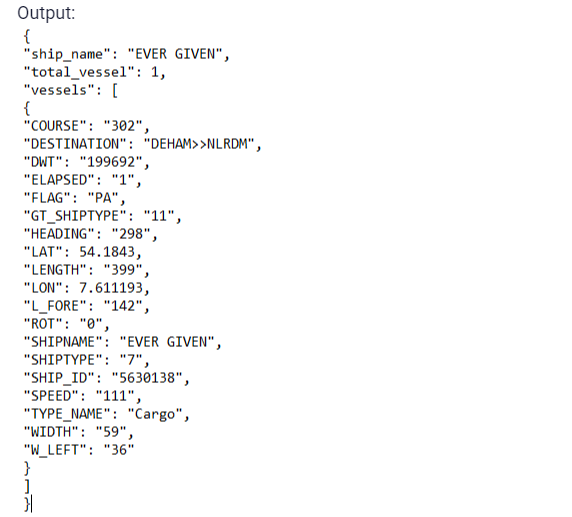How Can An API Help You Create A Maritime Traffic Database?
Are you trying to find a good API to use for a ship database? You should try the one recommended below!
A ship database is a comprehensive collection of data and information about various types of ships, including their specifications, history, ownership, and other relevant details. Such databases can be beneficial for a range of industries, including maritime logistics, shipping, and trade. However, the usefulness of a ship database can be enhanced even further with the integration of a ship tracking API. In this article, we will explore the benefits of incorporating a ship tracking API into a ship database.
Firstly, a ship tracking API can provide real-time data about a ship’s location, speed, heading, and other critical parameters. This information can be particularly useful for ship owners, operators, and logistics companies who need to monitor the movements of their vessels. By integrating this data into a ship database, users can access up-to-date information about the ships they are interested in. This information can be used to track the progress of a shipment, plan routes, and optimize schedules.
Secondly, a ship tracking API can also provide historical data about a ship’s movements. This data can be used to analyze past patterns and trends and make predictions about future movements. By integrating this data into a ship database, users can gain insights into shipping patterns and trends, which can be used to improve forecasting and planning activities.
Thirdly, a ship tracking API can help improve the accuracy and completeness of a ship database. By providing up-to-date information about ship movements and specifications, the API can help fill in gaps in the database and correct errors. This can help improve the quality of the data in the database, making it more useful for a range of applications.
Finally, a ship tracking API can help improve collaboration and communication between different stakeholders in the shipping industry. By providing a common platform for sharing data and information, the API can help facilitate collaboration between ship owners, operators, logistics companies, and other stakeholders. This can help improve efficiency and reduce costs by reducing duplication of effort and improving coordination.
So How Does An API Work?
The information age has made it possible for individuals and organizations to have access to thousands of applications and user interfaces with the aim of streamlining their daily routines and processes, even in an integrated manner. And APIs were specifically created to integrate various applications and their functions, so that developing an app or website doesn’t imply doing everything from scratch. Now that you know more about a ship tracking API, we urge you to try out Zyla’s Vessel Traffic Information API and see how easy it is to get started.
To make use of it, you must first:
1- Go to Vessel Traffic Information API and simply click on the button “Subscribe for free” to start using the API.
2- After signing up in Zyla API Hub, you’ll be given your personal API key. Using this one-of-a-kind combination of numbers and letters, you’ll be able to use, connect, and manage APIs!
3- Employ the different API endpoints depending on what you are looking for.
4- Once you meet your needed endpoint, make the API call by pressing the button “run” and see the results on your screen.



